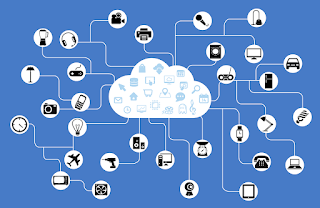5 Reasons to Use .NET for your Next IoT Project
10 years back when IoT has just started, there were very few engineers exploring IoT application development. Today, a large bunch of people is interested in IoT. Few of them use IoT to make devices which can be used at home while others use Industrial IoT (IIoT) to improve the effectiveness of industries.
The huge interest in making of IoT devices in addition to the availability of various components has helped in the development of various platforms for the creation of IoT solutions. Some of the platforms are outdated while some are widely used today.
Asp Dot Net is an example of a platform which can keep up with the recent trends in IoT development. There are many big companies like Amazon, Dell who work with dot Net because of its versatile nature and a great performance which is two most important features of IoT software development. Let's dive in to know why the combination of Dot Net and IoT is so favorable.
1. Windows 10 IoT Core
Because .NET is available thanks to Microsoft, it makes sense that it’s fully compatible with Windows 10 IoT Core. The Windows 10-based operating system (OS) for embedded systems was released in 2015; it was designed specifically to run on low-power mass-market devices such as Raspberry Pi 2 & 3, Dragonboard 410c, and MinnowBoard MAX. And best of all, it’s free.
Windows 10 IoT Core comes with a handy toolkit and lots of integration options thanks to the Universal Windows Platform (UWP), alongside Visual Studio and Azure Cloud Platform.
.NET Core and UWP will help you to build awesome IoT apps for Windows 10 IoT Core with the bonus of a smooth and pleasant UX. True, you won’t be able to implement complex IIoT systems using Windows 10 IoT Core and some .NET, but at least you’ll have fun doing things like customizing the thermostat or hacking into your doorbell.
2. ASP.NET Core
Unless you’ve been living under a rock for the last couple of years, you probably know that ASP.NET Core is a free cross-platform and open-source web framework. A very popular framework, we must say. It enables Dot NET developers to create compelling web applications with ease. It also applies to IoT apps. Having Windows 10 IoT and ASP.NET Core in your toolset allows you to build nice applications or background-running services and run them on your IoT device.
ASP.NET Core offers a rich toolbox, supports several programming languages (C#, Visual Basic, F#), fast deployment, has tough security, offers out-of-the-box performance, and enables easy cloud integration—just what you need for your next IoT project. In other words, the sky is the limit.
Speaking of skies, you’re free to choose any cloud platform for your applications—Microsoft Azure, AWS, Google Cloud IoT—you name it. ASP.NET Core is easy to deploy in a cloud, and you can even deploy an app with the exact same .NET runtime as the one you used during development. This means that you’ll encounter fewer strange bugs caused by environmental differences.
3. Microsoft Azure
Microsoft Azure is rightfully recognized as one of the best enterprise-grade platforms available, and it works wonderfully for IoT users’ purposes. Microsoft provides an Azure IoT platform and IoT accelerators as well as data storage and recovery. Azure’s flexibility, interoperability, security, and analytics are all very important features for IoT developers.
This reliable and secure cloud platform offers a myriad of services. You can easily deploy your applications in the cloud in just a few clicks by setting up an application host or runtime in the Azure Dashboard. Microsoft’s top engineers are continuously working on Azure to add useful features and deliver necessary updates.
4. .NET Ready-Made Solutions
You will rarely encounter an issue with your code that hasn’t been raised and resolved somewhere on the Internet, which is why .NET encourages developers to save time and use ready-made solutions. So, if you’re having trouble with your IoT solution, chances are somebody has already solved it and published the code on GitHub or Bitbucket—they are just waiting patiently for you to hit that “Ctrl+C Ctrl+V” keyboard combination.
All jokes aside, big communities like .NET produce a great deal of reusable code. It can vastly speed up your IoT app development, and that’s not mentioning the .NET Framework class library. If the pesky deadline is tomorrow and you don’t have a solution yet, .NET may just be your only option for today.
5. The Large .NET Community
If you’ve ever looked for an answer on StackOverflow, you know how important it is to have a supportive community that’s always ready to help you out. Luckily for us, .NET boasts just such a community. The number of developers working with .NET exceeds two million—that’s two million people who are ready to share their experiences and discuss challenging questions with you. Here’s why it’s better than the support line: in a community, thousands of professional developers with hands-on experience from all over the world can help thousands of their less-experienced IoT counterparts by answering questions quickly and offering several solutions at once.



Comments
Post a Comment